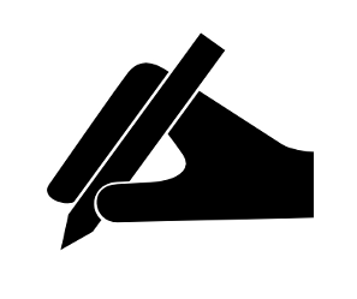 |
| An Abney's Level |
An Abney level is an
instrument used in surveying which
consists of a fixed sighting tube, a movable spirit level that is connected to
a pointing arm, and a protractor scale. An internal mirror allows the user to
see the bubble in the level while sighting a distant target. It can be used as
a hand-held instrument or mounted on a Jacob's
staff for more precise measurement, and it is small enough
to carry in a coat pocket.
Origins
The Abney level was invented by Sir William de Wiveleslie
Abney (Born 24 Jul 1843 Died 3 Dec 1920) who
was an English astronomer and chemist best known for his pioneering of color
photography and color vision. Abney invented this instrument under the
employment of the School of Military Engineering in Chatham, England prior to late 1870. It is
described by W. & L. E. Gurley as an English modification of the Locke hand
level.
Characteristics
1. It can be use to
determine the height of an object.
2. It can be use as a
leveling instrument also.
3. It has also usage to
measure the slope of a ground surface.
4. Very small instrument
so can be transport easily.
5. Easy to use.
Main Parts
The
abbey’s level consisting of three main parts as follows:
a. Bubble Tube: A small bubble tube attached to a vernier arm is provided and
it can be rotated with the help of a mild head screw or by rack and pin on
arrangement. The image of the bubble is seen in the mirror. The arrangement is
made such a way that whatever may be position
of telescope the tube is always horizontal.
b. Graduated Arc:
A semi circular graduated arc is provided to take the reading. The middle point
of the arc is marked zero and it extends up to 90 degrees on either side. The
zero mark coincide with zero mark of the vernier on the other side of the
graduated arc gradient or slope are marked which can be read against outer or
beveled edge of the vernier.
c. Square Tube:
The brass square tube is used for providing the line of site and it is provided
with the hole or eye piece at one end and a cross wire with reflecting mirror
at 45 degrees at the other end opening is provided just above the mirror to
receive the rays from the bubble tube which is provided above it.
How
to Use an Abney
To determine the elevation difference between
surveyor and a specific point:
Point the sight at the selected point for
which you wish to know the elevation difference and view the location through
the sight. Holding the Abney steady read the angle difference from
vertical off the side. Next measure the ground distance from you to the
selected point using paces or a measuring tape. To calculate the vertical
elevation, use the following equation:
Vertical
Distance = Ground Distance x sin (angle)
After that, you have to add the calculated
height with the height of eye level of surveyor. So, the total height of the
object from ground surface will come.
Common uses
Abney levels
remain in common use in several fields:
·
In topographic surveying, to place high precision surveying
equipment, particularly in rough terrain.
·
In forestry, for tree height measurement.
·
In mining and mine safety inspection, to measure the grades of
haulage roads.
·
In geology, in measurements of rock outcrops and fault scarps.
References
1.
http://forest.mtu.edu/pcforestry/resources/studentprojects/StephenJesse/mapping_files/Page483.htm
A SHORT DESCRIPTION OF ABNEY’S LEVEL & HOW IT WORKS
An Abney's Level An Abney level is an instrument used in surveying which consists of a fixed sighting tube, a movable spirit ...














